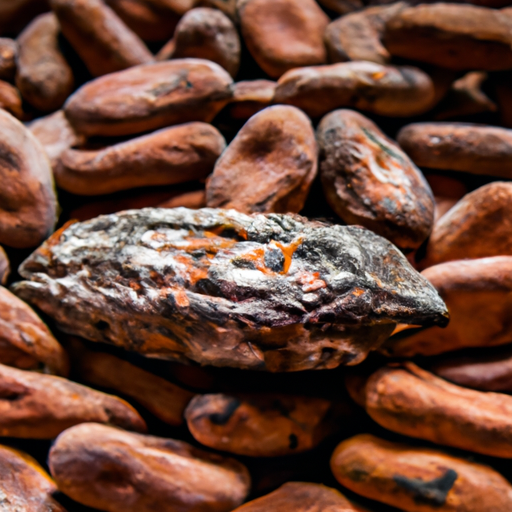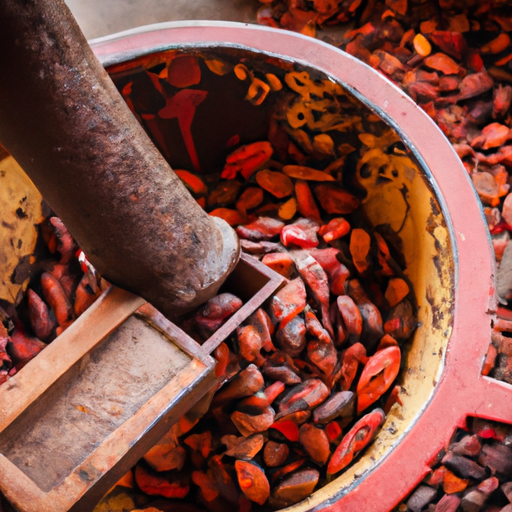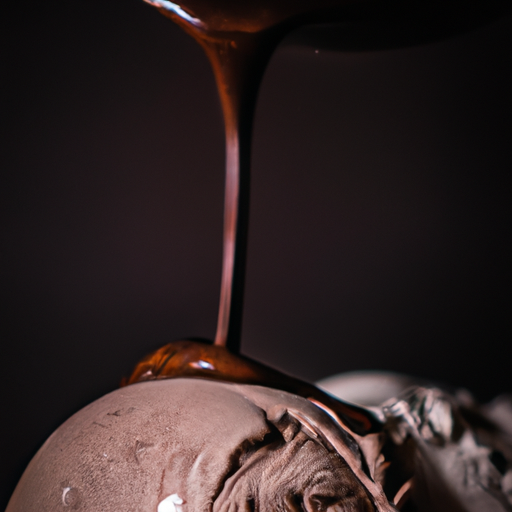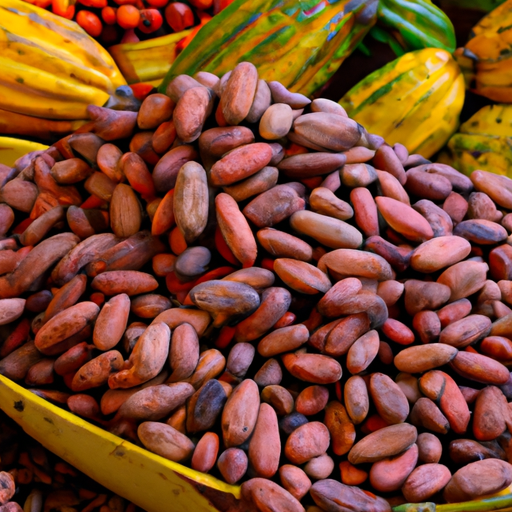Raw cacao is not just tasty but also a potent stimulant. In this article, we will delve into the intriguing realm of raw cacao and reveal its mysteries as a brain-boosting, energy-enhancing marvel. We will cover everything from its makeup to its mental and physical advantages, leaving no question unanswered.
But that’s not all! We will also dive into its stress-reducing and mood-lifting properties, making it a natural antidepressant. And if that’s not enough, we’ll explore the plethora of other health benefits that raw cacao has to offer.
So, grab your favorite cup of hot chocolate and get ready to discover the incredible stimulant power of raw cacao!
Key Takeaways
- Raw cacao contains caffeine and theobromine, which are stimulants.
- Consumption of raw cacao can increase heart rate and cause restlessness.
- Excessive intake of raw cacao may lead to insomnia.
- Raw cacao can have potential negative effects on digestion if consumed excessively.
The Composition of Raw Cacao
Raw cacao is packed with a powerful combination of compounds that can leave you feeling energized and ready to take on the world. It is not only delicious but also offers numerous health benefits. In terms of weight loss, raw cacao can be a great addition to your diet. It is low in calories and high in fiber, which can help you feel fuller for longer and reduce overall calorie intake.
Raw cacao contains flavanols, which have been shown to improve heart health by reducing blood pressure and improving blood flow. These compounds also have antioxidant properties, which can protect against oxidative stress and inflammation.
Now, let’s delve into how raw cacao stimulates the brain.
How Raw Cacao Stimulates the Brain
Research suggests that raw cacao can enhance memory in several ways. Firstly, it contains flavonoids that increase blood flow to the brain, promoting better cognitive function. Secondly, raw cacao is rich in antioxidants, which protect brain cells from oxidative stress and improve memory retention. Lastly, the caffeine and theobromine found in raw cacao act as stimulants, enhancing focus and attention. These compounds bind to specific receptors in the brain, leading to increased alertness and improved cognitive performance. Therefore, consuming raw cacao may provide a natural way to boost memory and improve focus.
Moving forward, let’s explore how raw cacao can also provide an energy boost.
Energy Boost from Raw Cacao
Raw cacao is a natural source of caffeine, which provides an energy boost. It contains theobromine, a stimulant that can enhance focus and alertness.
Additionally, raw cacao promotes sustained energy release, preventing crashes often associated with other sources of caffeine.
Natural source of caffeine
Cacao is like a natural shot of energy, giving you a boost without the jitters. It contains a small amount of caffeine, which acts as a stimulant, but it also contains other compounds that enhance its energizing effects.
Unlike other caffeinated beverages, which can lead to sleep disturbances, cacao provides a more balanced and gentle energy boost. This makes it a great natural alternative for those looking to avoid the negative impacts that caffeine can have on sleep.
Additionally, cacao contains theobromine, a compound that is structurally similar to caffeine but has a milder stimulant effect. This combination of caffeine and theobromine in cacao contributes to its ability to provide sustained energy release throughout the day.
Transitioning into the subsequent section, cacao’s energizing properties extend beyond just the initial boost.
Sustained energy release
Cacao’s sustained energy release keeps you feeling energized throughout the day, without the crash that can come from other sources of caffeine. Here are four reasons why this is so beneficial:
-
Balanced blood sugar levels: Raw cacao contains a combination of nutrients, including fiber and healthy fats, that slow down the release of sugar into the bloodstream. This helps prevent spikes and crashes in blood sugar levels, providing a steady and sustained source of energy.
-
Enhanced endurance: The natural compounds found in raw cacao, such as theobromine and phenylethylamine, have been shown to improve endurance and promote a sense of alertness. This can be particularly beneficial for athletes or those engaging in physical activities.
-
Mental clarity: The sustained energy release from cacao also supports mental clarity and focus. It helps improve cognitive function and promotes a positive mood, allowing you to stay sharp and productive throughout the day.
-
Long-lasting satisfaction: Cacao’s sustained energy release keeps you feeling satisfied for longer periods, reducing cravings and the need for frequent snacking. This can support weight management goals and promote a healthier overall lifestyle.
With its ability to provide sustained energy and numerous other benefits, it’s no wonder that cacao is gaining popularity as a natural stimulant. Moving on to the next section about mental and cognitive benefits, let’s explore how cacao can further boost our brainpower.
Mental and Cognitive Benefits
Indulging in raw cacao can enhance mental clarity and cognitive function. The natural compounds found in raw cacao, such as flavonoids and methylxanthines, have been shown to improve focus and boost brain health.
Flavonoids act as antioxidants, protecting the brain from oxidative stress and inflammation, which can impair cognitive function. They also promote increased blood flow to the brain, enhancing mental clarity and alertness.
Additionally, methylxanthines, like theobromine and caffeine, found in raw cacao, can stimulate the central nervous system, promoting improved focus and concentration. Research suggests that consuming raw cacao regularly may have long-term cognitive benefits, including improved memory and learning abilities.
As we transition into discussing the physical benefits of raw cacao, it’s important to note that its effects on the mind and body go hand in hand.
Physical Benefits of Raw Cacao
Boost your overall well-being and experience a natural energy boost with the physical benefits of indulging in this delightful treat.
Raw cacao can enhance physical performance due to its high content of flavanols, which have been shown to improve endurance and reduce fatigue during exercise.
Additionally, consuming raw cacao has been linked to improved cardiovascular health. The flavanols in raw cacao help to increase blood flow, lower blood pressure, and reduce the risk of heart disease.
Moreover, raw cacao contains magnesium, a mineral that plays a crucial role in muscle function and energy production, further supporting physical performance.
These physical benefits make raw cacao a great addition to a balanced diet and active lifestyle.
Transitioning into the next section, let’s explore how raw cacao can also help reduce stress.
Raw Cacao and Stress Reduction
Raw cacao has numerous physical benefits, but it also has positive effects on stress reduction. One way it does this is by improving sleep quality. Raw cacao contains magnesium, which has been linked to better sleep.
In addition, raw cacao can enhance mood by increasing the production of neurotransmitters like serotonin and dopamine. These neurotransmitters are associated with feelings of happiness and well-being.
So, if you’re feeling stressed or down, incorporating raw cacao into your diet may be a natural and delicious way to improve your mood and overall mental well-being.
Now, let’s explore how raw cacao can act as a natural antidepressant.
Raw Cacao as a Natural Antidepressant
Are you looking for a natural way to lift your mood and combat depression? Look no further than the delicious power of raw cacao. Raw cacao has been praised for its mood-enhancing properties, thanks to its unique combination of compounds that can have a positive impact on our brain chemistry. One of the key factors behind raw cacao’s mood-boosting effects is its high antioxidant content. Antioxidants help protect our cells from damage caused by free radicals, which can contribute to the development of depression. By reducing oxidative stress and inflammation in the body, raw cacao can promote a healthier brain and improve our overall mood. So, if you’re feeling down, consider incorporating raw cacao into your diet for a natural antidepressant boost. It’s just one of the many health benefits this amazing superfood offers.
Other Health Benefits of Raw Cacao
When it comes to the health benefits of raw cacao, there are two key points that I find particularly intriguing.
First, raw cacao has been shown to lower blood pressure and reduce inflammation, which can have a positive impact on overall cardiovascular health.
Additionally, raw cacao is known to boost immune function, which is vital for maintaining a strong and healthy body.
Lastly, raw cacao has been found to promote healthy skin, thanks to its high levels of antioxidants that help protect against free radicals and promote collagen production.
Lowering blood pressure and reducing inflammation
To experience the power of raw cacao as a stimulant, let its rich and soothing flavors wash over your taste buds, like a calming wave that lowers your blood pressure and eases inflammation. Raw cacao contains compounds called flavanols, which have been shown to lower blood pressure and reduce inflammation in the body. Studies have found that consuming raw cacao can lead to a significant decrease in systolic and diastolic blood pressure, helping to improve cardiovascular health. Additionally, the flavanols in raw cacao have antioxidant properties that help reduce inflammation and oxidative stress in the body. This can have a positive impact on overall health and may even help lower the risk of chronic diseases. As we explore the benefits of raw cacao further, we’ll discover its ability to boost immune function and promote healthy skin.
Boosting immune function and promoting healthy skin
Indulge in the rich flavors of raw cacao and let it work its magic on your immune system and skin, leaving you feeling vibrant and rejuvenated.
Raw cacao is not only a delicious treat but also a powerful stimulant that can boost your energy levels and improve digestion. Here are three ways raw cacao can benefit your immune system and promote healthy skin:
-
Enhanced immune function: Raw cacao is packed with antioxidants, such as flavonoids, that help strengthen your immune system and protect against harmful pathogens.
-
Skin rejuvenation: The antioxidants in raw cacao can promote collagen production, reducing the appearance of fine lines and wrinkles and giving your skin a youthful glow.
-
Digestive health: Raw cacao contains fiber and enzymes that aid in digestion, promoting a healthy gut and preventing digestive issues.
As you discover the many health benefits of raw cacao, you’ll be eager to incorporate it into your diet and experience its transformative effects.
Incorporating Raw Cacao into Your Diet
When it comes to incorporating raw cacao into my diet, I have discovered some delicious ways to enjoy it.
From adding it to smoothies and oatmeal to using it in healthy dessert recipes, the options are endless.
However, it is important to keep in mind the recommended daily intake and take precautions, as too much raw cacao can lead to negative effects such as jitteriness and increased heart rate.
Delicious ways to enjoy raw cacao
Savor the rich, velvety taste of raw cacao and let it awaken your senses with its natural stimulant properties. Not only is raw cacao a healthy alternative to processed chocolate, but it also offers a plethora of delicious ways to incorporate it into your diet.
From homemade chocolate bars to decadent smoothies, the possibilities are endless. Raw cacao is not only a treat for your taste buds but also a powerhouse of health benefits. It is packed with antioxidants, magnesium, and iron, which can improve heart health, boost mood, and enhance brain function.
However, it is important to remember that moderation is key when consuming raw cacao due to its stimulant effects. So, let’s explore the recommended daily intake and precautions to ensure that we can fully enjoy the benefits of raw cacao without overindulging.
Recommended daily intake and precautions
Make sure to consume raw cacao in moderation and be aware of any potential side effects to fully enjoy its health benefits.
The recommended daily intake of raw cacao is around 1-2 tablespoons or 15-30 grams. This amount provides a good balance of the stimulant effects and the health benefits of raw cacao.
However, it’s important to note that individual tolerance may vary, so it’s best to start with a smaller amount and gradually increase it if desired.
It’s also important to consider any potential side effects. Raw cacao contains caffeine and theobromine, which can act as stimulants and may cause increased heart rate, restlessness, or insomnia in some individuals.
Additionally, excessive consumption of raw cacao can lead to digestive issues such as bloating or diarrhea. It’s always recommended to listen to your body and adjust your intake accordingly.
Frequently Asked Questions
Can raw cacao cause addiction or dependence?
Raw cacao can cause addiction concerns due to its high content of theobromine, a stimulant. However, it also offers various health benefits such as improved mood and enhanced cognitive function when consumed in moderation.
Is there a recommended amount of raw cacao to consume for optimal stimulation?
There is a recommended daily intake of raw cacao for optimal stimulation. Consuming moderate amounts can provide potential health benefits, such as improved mood and energy levels, due to its natural stimulant properties.
Are there any side effects or risks associated with consuming raw cacao as a stimulant?
Consuming raw cacao as a stimulant may have some potential side effects and health risks. These can include increased heart rate, digestive issues, migraines, and allergic reactions. It’s important to consume raw cacao in moderation and consult with a healthcare professional if needed.
How does the stimulant effect of raw cacao compare to other popular stimulants like caffeine or energy drinks?
Comparing the effects of raw cacao to caffeine and energy drinks on stimulation, raw cacao provides a natural alternative. While caffeine and energy drinks offer quick bursts, raw cacao offers sustained energy with fewer side effects.
Can raw cacao help improve focus and concentration?
Raw cacao can potentially improve focus and concentration due to its natural stimulant properties. Studies suggest that the compounds found in raw cacao can enhance memory and mental alertness, making it a promising option for cognitive enhancement.
Is the Stimulant Effect of Raw Cacao the Main Reason to Eat It?
The benefits of raw cacao go beyond its stimulant effect. Raw cacao is rich in antioxidants, magnesium, and other nutrients that promote heart health, improve mood, and boost brain function. While the stimulant effect is a perk, the overall nutritional profile makes raw cacao a great addition to a balanced diet.
Conclusion
In conclusion, raw cacao is not just a delicious treat, but also a powerful stimulant that can provide numerous health benefits.
Its composition, including compounds like theobromine and phenylethylamine, stimulates the brain, providing an energy boost and enhancing mental and cognitive functions.
Additionally, raw cacao can help reduce stress and act as a natural antidepressant.
Incorporating this superfood into your diet can lead to improved overall health and well-being.
So go ahead, indulge in a piece of raw cacao and let its magic flow through your veins like a soothing symphony.










